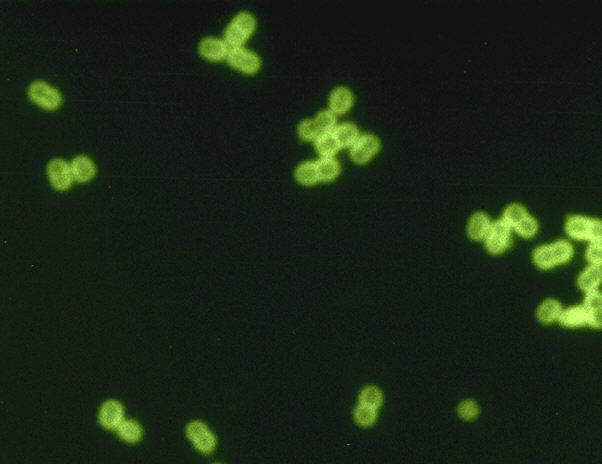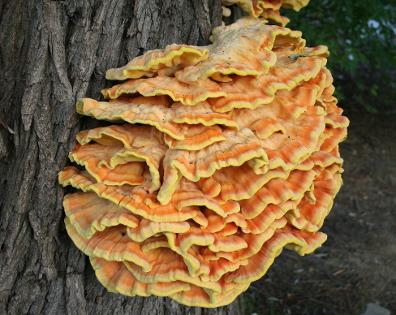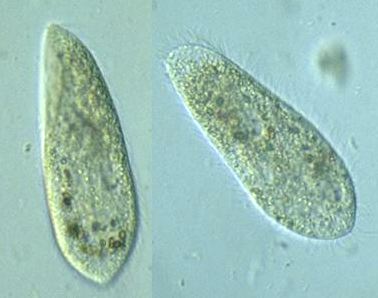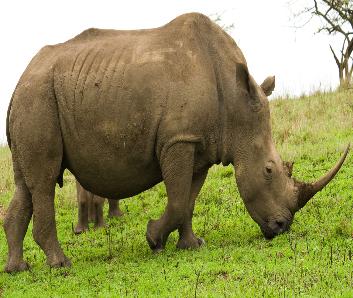Unity and Diversity Between Organisms in all the Domains
First Comparison:

Figure 17a: Streptococcus pneumoniae

Figure 18a: Chicken of the Woods Mushroom
Figure 18a: Chicken of the Woods Mushroom
Streptococcus pneumoniae and Chicken of the Woods
Many people assume that fungi and bacteria are similar. However, this is not entirely true as seen with a bacterium, Streptococcus pneumoniae, and Chicken of the Woods, a fungus. For example, they are both found in entirely different environments. The fungus is found in the upper respiratory system of a human [16b] while the bacterium is found on trees [17b]. Also, this particular bacterium is visible to the naked eye while Streptococcus pneumoniae is microscopic. Chicken of the Woods is an edible organism [16b]; however, Streptococcus pneumoniae is not. Streptococcus pneumoniae causes harmful infections to the human body [17b].
There are several similarities between these organisms. First, they are both harmful to their hosts. Chicken of the woods harms the tree it grows on [16b] and the fungus harms the human it grows in [17b]. Second, neither contains organs or a respiratory system. One last significant similarity between this fungus and bacterium is that they both depend on other living organisms to be their source of life and provide them with nutrients.
Second Comparison:

Figure 19a: Paramecium

Figure 20a: Rhinoceros
A Rhinoceros and a Paramecium
One might think that a paramecium and a rhinoceros would be completely different, however, they would be wrong. These two organisms, surprisingly, have a couple things in common as well as several differences. The rhinoceros and the paramecium both have chromosomes that are diploids [24a] [25a]. Additionally, they both have some form of mouth that they use to eat plants. The paramecium can live off of many substances, one of which is plants [24a]. Similarly, the rhinoceros is a herbivore- which means that its diet only contains plants [25a]. Also, both can move surprisingly fast for their size. The rhinoceros can run up to 49 kilometers per hour [25a] and a paramecium can also move extremely fast due to its cilia [24a].
One of the differences between these two organisms is their size. A rhinoceros is 3.6-3.9 meters long [25a] while the paramecium is 50-300 micrometers [24a]. They also both reproduce in different ways, the paramecium reproduces asexually through binary fission and the rhinoceros reproduces sexually. Another difference between the rhinoceros and the paramecium is that the adult rhinoceros has no predators, besides humans, while the paramecium has many predators. The paramecium's predators would include the amoeba, water fleas, flatworms and similar organisms.
DM/RJ